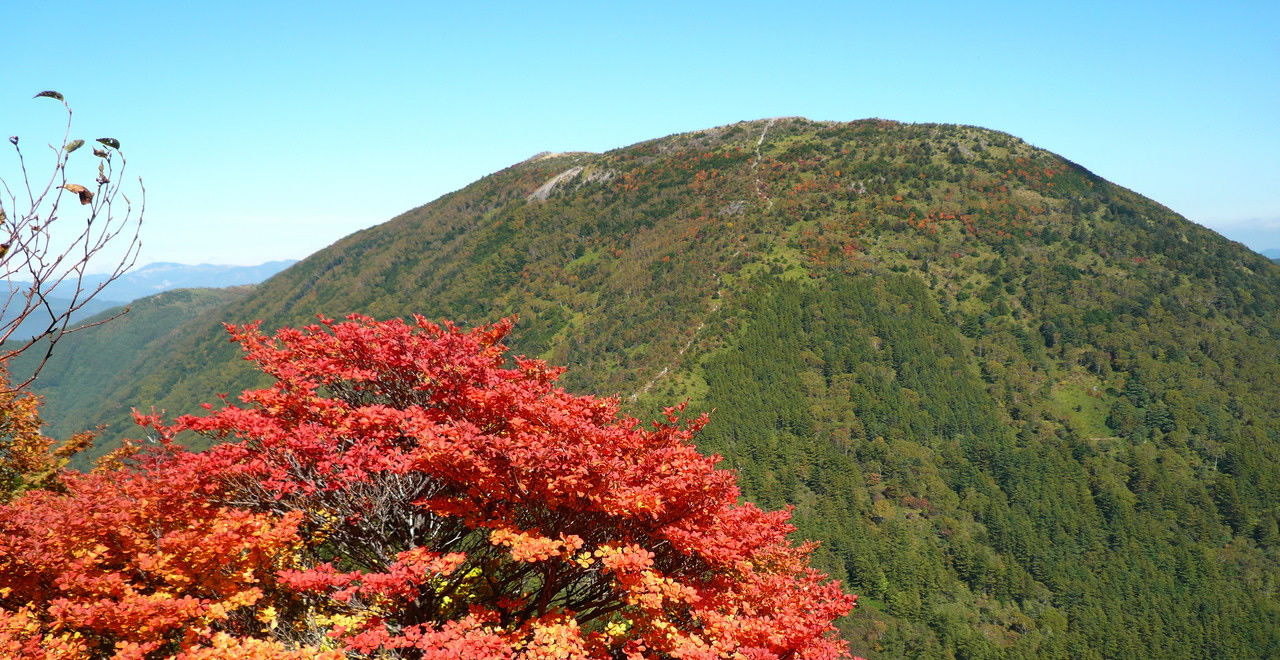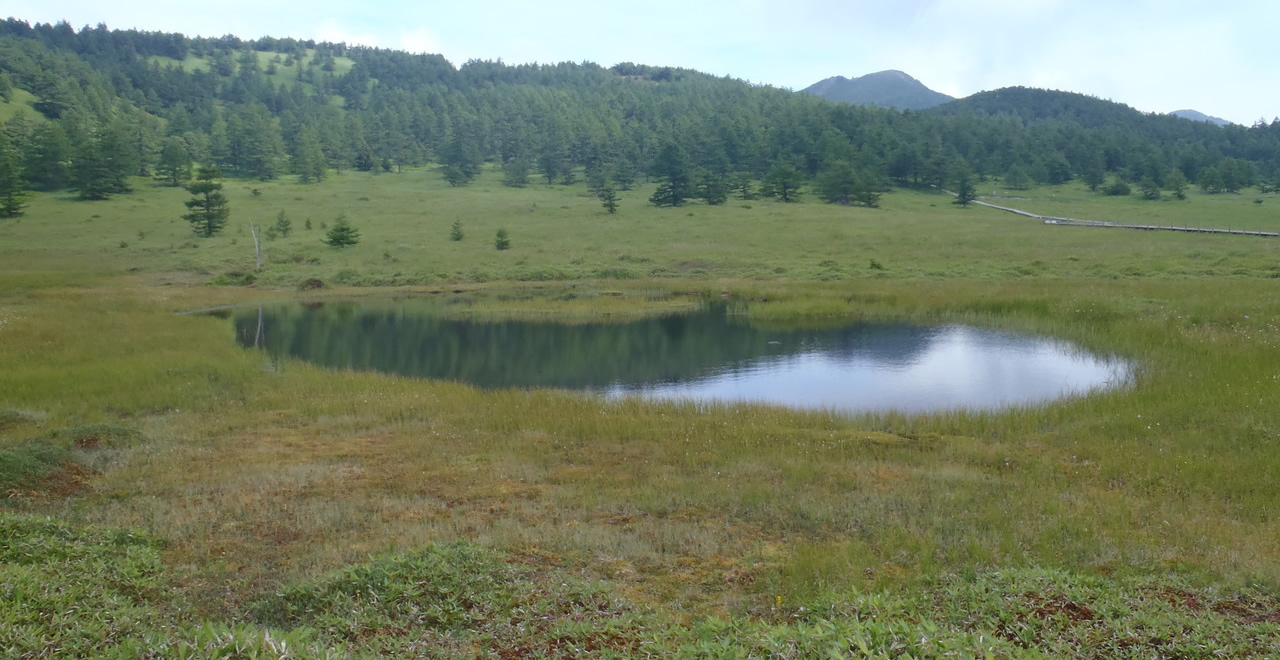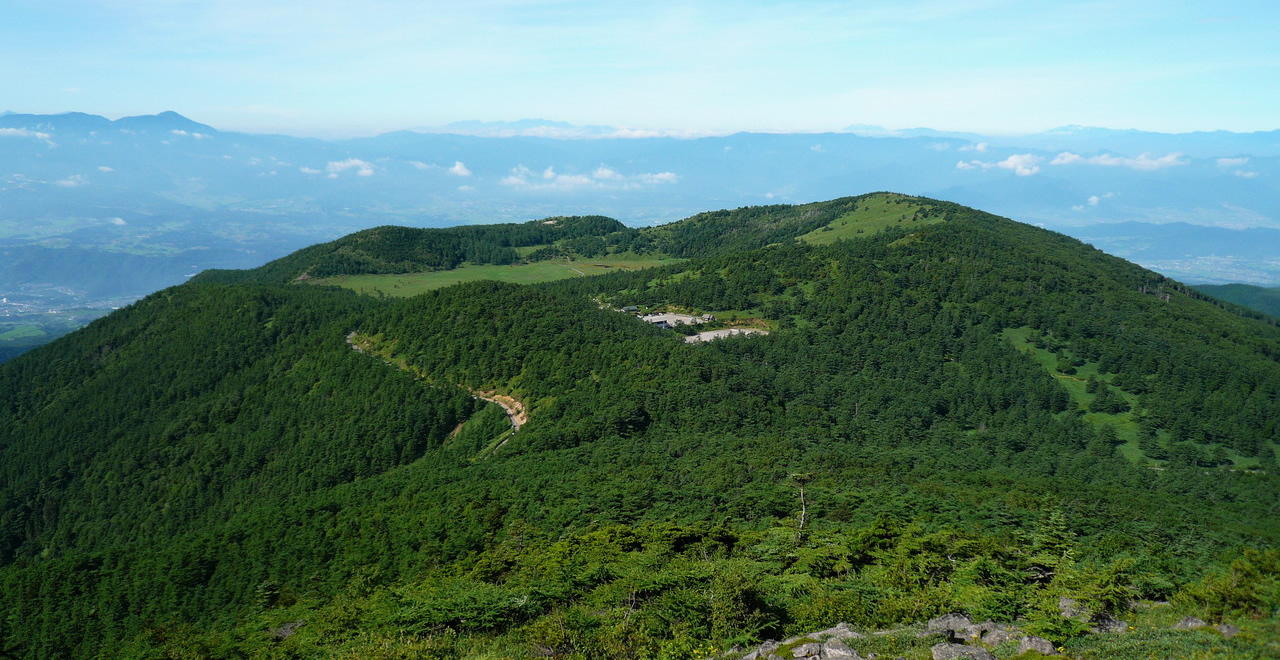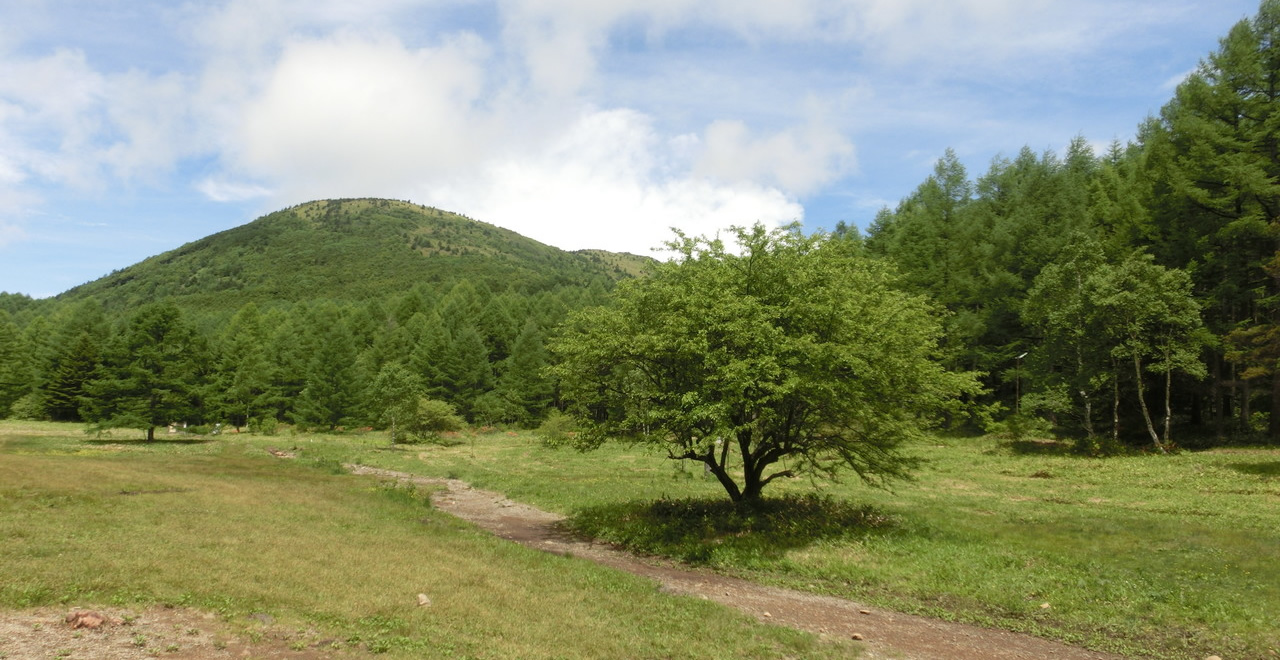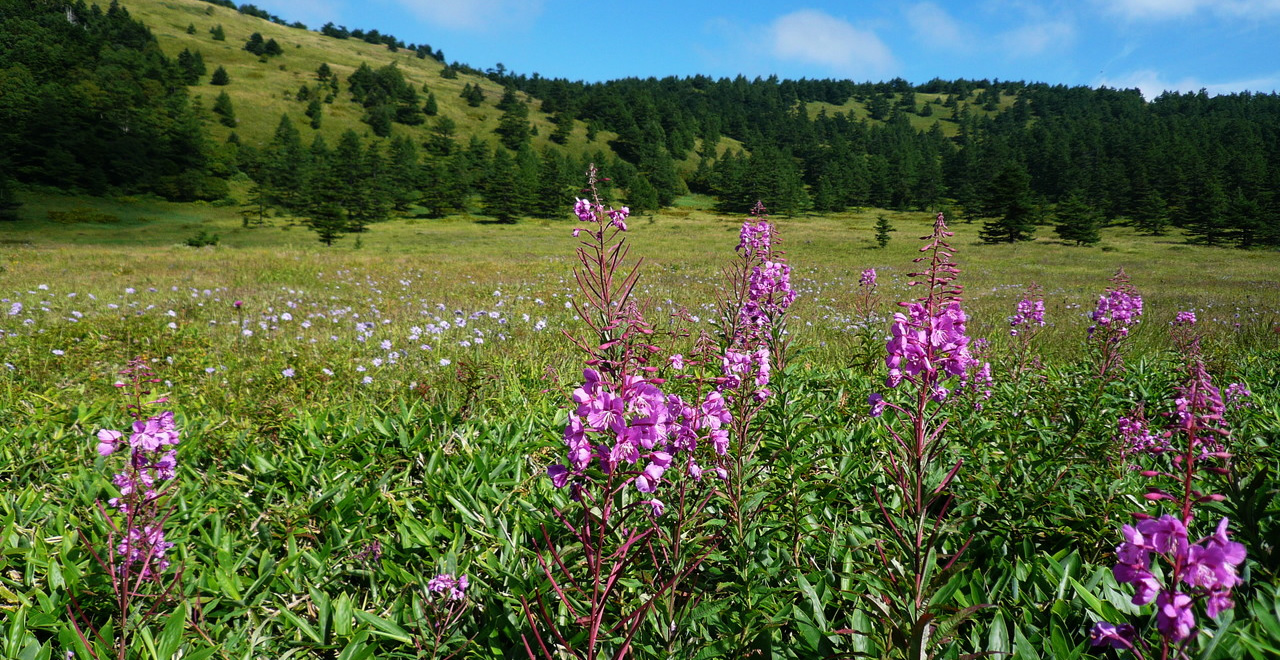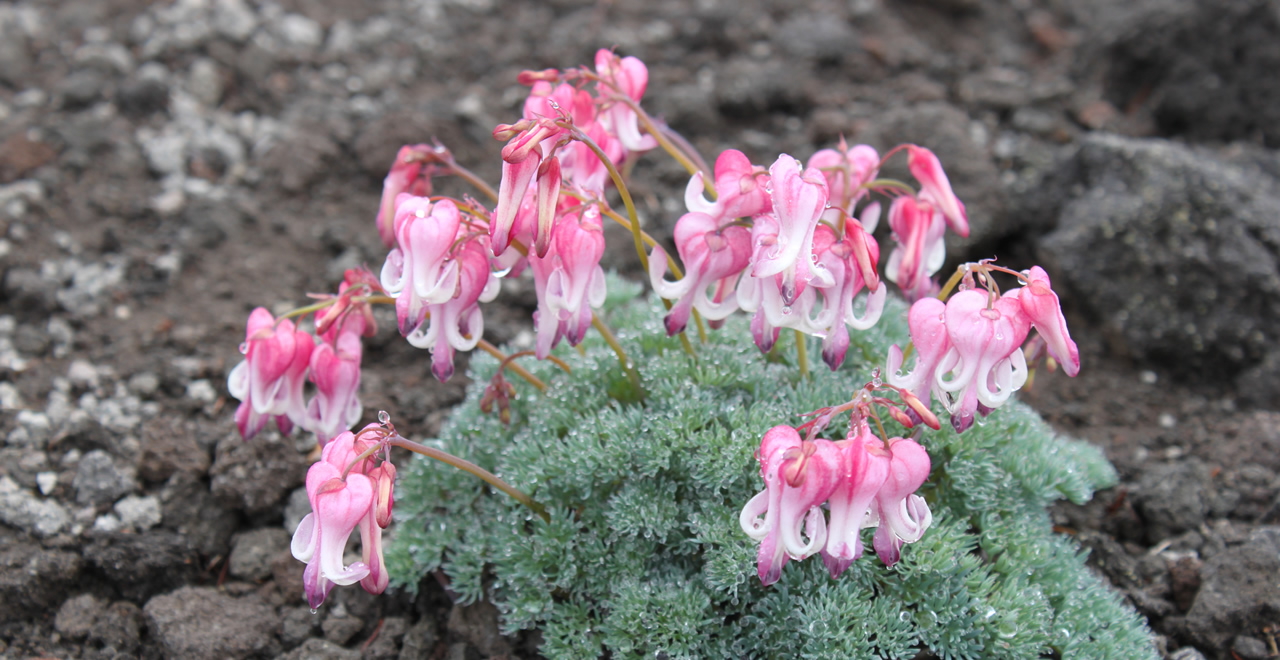Yunomaru-Takamine Recreation Forest
1374.78ha
Elevation Lowest : 1,622m / Average : 1,750–1,900m / Highest : 2,066m (Mount.Eboshi Summit)
The plateau of flowers: enjoy panoramic views of 700,000 Japanese azaleas
and Dicentra peregrina, the queen of alpine plants
The plateau of flowers: enjoy panoramic views of 700,000 Japanese azaleas and Dicentra peregrina, the queen of alpine plants
- Newest information
- CHECK
Please visit official tourism websites for the latest updates and information.
- Area
- Chubu
- Activities
- Flower-viewing Autumn leaf viewing Birdwatching Picnics (lawn area/park) Mountain climbing (Includes surrounding area) Guided tours (charge applies. Foreign language support not available.) Skiing (Ski resort)(charge applies)(9 trails; longest trail length: 2,900 m) Snowshoeing Hot Spring
- Overview
-
- Geographical/topographical features
- Yunomaru-Takamine Recreation Forest is found to the west of the Asama range, in a subalpine zone with numerous peaks up to 2,000 m in height.
- Historical/cultural features
- Yunomaru-Takamine Recreation Forest is located amid the Asama–Eboshi volcanic group, where volcanic activity began about one million years ago at Mount Eboshi. It is believed that the Asama range was formed as this volcanic activity moved toward Mount Asama.
- Climate, flora and fauna
- The climate of Yunomaru Kogen is a mixture of the characteristics of the Pacific Ocean and Sea of Japan climate zones. Although it is a subalpine zone, it is home to a wide range of vegetation, from montane to alpine plants, so it has come to be known as the “plateau of flowers.” Approximately 1,150 plant species grow in Yunomaru Kogen, most notably a vast number of rengetsutsuji, Japanese azalea (Rhododendron molle subsp. japonicum). Late June is the best time to enjoy panoramic views of these flowers, which are said to number 700,000 and have been designated as a natural monument by the government. At the same time, visitors can see a cluster of komakusa (Dicentra peregrina) ― the queen of alpine plants ― in bloom near Ikenotaira. Among the wild creatures that find their habitat here are the nihon kamoshika, Japanese serow (Capricornis crispus), which is protected as a nationally designated special natural monument; benihikage (Erebia niphonica); miyamamonkicho, moorland clouded yellow (Colias palaeno); and miyamashirocho (Aporia hippia japonica ).
- Attractions
- Yunomaru Kogen: Conveniently located just two and a half hours from the heart of the metropolis, the gentle, rounded peaks of the Yunomaru area, such as Mount Yunomaru and Mount Eboshi, offer a variety of trekking options for people of all fitness levels. The stable climate with little rain and the outstanding panoramic views make it a popular choice as a trail that even novices can feel at ease in tackling. The snow season begins in late November giving visitors the chance to enjoy exploring the silvery plateau on skis or snowshoes. The Recreation Forest is also equipped with a restaurant, kiosk, and accommodation facilities.
Takamine Kogen: In every season, Kurumazaka Pass presents stunning, panoramic views of Mount Fuji, the Yatsugatake Mountains, and the Northern Alps in the distance, as well as the Chikuma River below. It is particularly spectacular in spring, as fresh verdure sprouts on the trees, and in autumn, when the leaves turn scarlet and gold.
The traverses through the individual peaks standing on the border between Gunma and Nagano prefectures, offering magnificent panoramas. To the north can be seen Sugadaira, Mount Azumaya, Kusatsu, Mount Shirane, and Mount Tanigawa; to the south, Okuchichibu, Mount Kobushi, Mount Fuji, the Yatsugatake Mountains, and Mount Tateshina; and to the west, the splendid peaks of the Northern Alps. This traverse trail starts in the east at Mount Kurohu, one of the main peaks on the outer rim of Mount Asama, and runs west across Kurumazaka Pass, Mount Takamine, Mount Mizunoto, and Mount Kagonoto before crossing the high wetland of Ikenotaira Swamp. From there, it runs on to Mount Sanpo, Mount Miharashi, Yunomaru Kogen, and Jizo Pass before reaching Mount Yunomaru and Mount Eboshi. The period between May and October is hiking season, while November through April is snow season, with winter offering the chance to enjoy snowshoeing and cross country skiing.
- Latest Information
- ー
- Usage Guide
-
- Entrance fee
- None
- Opening seasons and hours
- Open all year
- Accommodation options
- Yunomaru Campsite: Open June to September(For details of opening seasons, please contact : Yunomaru-Kogen (Highland)-Hotel Fax: 0268-62-1312)
Accommodation facilities are available near Yunomaru Kogen Jizo Pass, Kurumazaka Pass, and the Mount Takamine trailhead.
Yunomaru Takamine Forest Road is passable from 7AM to 5PM in high season. In low season (approx. mid-November-early May) it will be closed.
- Facility
- Toilets and drinking fountains Toilet (accessible) Walking trail Parking lot (accessible) (charges apply in some cases) Visitor center (staffed only) Vending machine Shop Restaurant Campsite and/or cabins (charge applies) Free public wireless LAN (Wi-Fi) Accommodation facilities (Hotels / Japanese inns)
- Map
- Address
- Yunomaru Kogen, Tomi-shi, Nagano Prefecture / Takamine Kogen, Hishidaira, Komoro-shi, Nagano Prefecture
- Access
(Distances and times are provided as a guide only) -
- By public transport
-
<Access from nearest railway station / bus stop>
- ・Shinano Railway Shigeno Station → Yunomaru Kogen Jizo Pass (30 minutes by car)
Yunomaru Kogen Jizo Pass → Ikenotaira Swamp (15 minutes by car) - ・Sakudaira Station (Chikuma Bus) → Yunomaru Kogen (60 minutes) (runs on weekends between mid-June and mid-August)
<Access from major transport hubs to nearest railway station / bus stop>- ・Tokyo Station (Hokuriku Shinkansen: 90 minutes) → change at Ueda Station (Shinano Railway: 15 minutes) → Shigeno Station
- ・Tokyo Station (Hokuriku Shinkansen: 90 minutes) → Sakudaira Station
- ・Shinano Railway Shigeno Station → Yunomaru Kogen Jizo Pass (30 minutes by car)
- By car
-
<Access>
- ・Joshinetsu Expressway Tobu-Yunomaru IC → Principal Prefectural Road Komoro–Ueda Line (toward Komoro for 2 km) → turn left at the Beppu traffic signals → Principal Prefectural Road Tomi–Tsumagoi Line → Yunomaru Kogen Jizo Pass parking lot (14 km / 25 minutes)
- ・Komoro Station → Route 141 → Route 18 → Cherry Park Line → Kurumazaka Pass (17 km / 40 minutes)
<Parking lot capacity / parking charges>Yunomaru Kogen Jizo Pass parking lot 1,500 standard-sized cars, 50 large vehicles Free of charge
Yunomaru Ikenotaira parking lot 100 standard-sized cars, 20 large vehicles Charges apply (large vehicles: ¥3,000; mid-size vehicles: ¥2,000; standard-sized cars: ¥500; motorbikes & motor scooters: ¥100)
- Management office contact details
-
Toshin District Forest OfficeTel: 0267-82-2036
https://www.rinya.maff.go.jp/chubu/tousin/tousinindex.html
- Official Tourist Information
-
Shinshu Toumi Tourist Association [External link]Komoro Tourism Bureau [External link]
- Recreation Forest Management Committee
- ー
- Supporters
- ー
- Other
- ー





